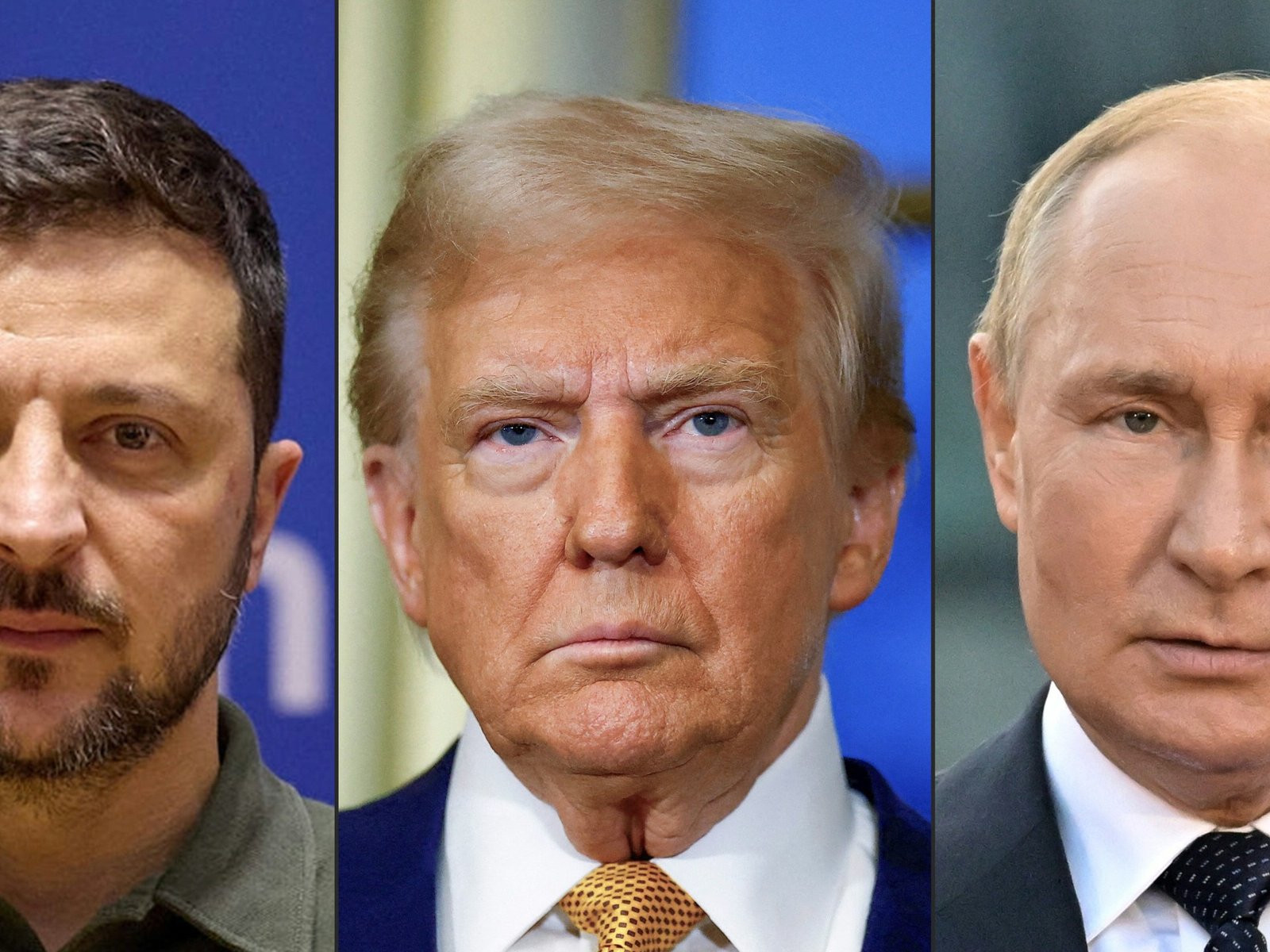Kyiv, Ukraine – Taras, a battle-hardened Ukrainian serviceman currently recovering from a contusion, holds little hope for significant outcomes from President Donald Trump’s anticipated summit with Russian President Vladimir Putin on August 15. “Don’t expect any miracles or peace agreements to materialize quickly; Putin will likely attempt to persuade Trump that Ukraine is the real obstacle to peace,” the 32-year-old, whose fair complexion is contrasted by a deep tan from his service in eastern Ukraine, explained to Al Jazeera.
Having spent over three years on the frontline, Taras, who recently thwarted an attack from a drone laden with explosives, declined to share his last name due to wartime protocols.
According to Taras, Putin aims to manipulate Trump’s self-image as a peacemaker to dodge more economic sanctions, all while seeking a critical military victory in eastern Ukraine. “Putin is convinced that by winter, he will either capture significant territory or manage to break through our defenses to dictate terms to Ukraine,” he remarked.
As the Trump administration heralds the Alaska summit as a pivotal moment for achieving a ceasefire, the prevailing sentiment among Ukrainians—both civilians and military personnel—is skepticism. This doubt stems from the ongoing military realities in eastern Ukraine, where Russia has escalated its campaign to capture vital locations in the Donetsk region. Reports indicate that thousands of Russian troops have been deployed in risky attempts to infiltrate secure Ukrainian positions guarded day and night by drones equipped with advanced surveillance technologies.
Recently, Russian forces have taken control of approximately 1,500 square kilometers (580 square miles), largely in Donetsk, where they now hold about three-fourths of the area, according to assessments based on geolocated evidence.
The progress, although marginal, is notably swifter than the previous three years. Following Russia’s invasion in February 2022, they initially seized about 27% of Ukrainian territory. However, as Ukraine launched a counteroffensive, Russia lost around 9% of the territory by the fall of 2022, and they have since regained less than 1% despite considerable troop losses.
Ukraine also exercises control over a small border area in Russia’s Kursk region, where a successful offensive was initiated in August 2024, although gains were mostly lost in early 2025.
Much of the skepticism regarding the Alaska meeting also comes from reports about potential concessions the U.S. might offer to Russia to persuade them to halt military actions. Some sources suggest that Trump could negotiate for Russia to gain full control over Donetsk and the adjacent Luhansk region in return for a ceasefire and a commitment to freeze the front lines elsewhere, including withdrawal from certain positions in Sumy and northeastern Kharkiv.
However, relinquishing Donetsk would require Ukraine to abandon a vital defensive line, spanning approximately 50 kilometers (31 miles) along a crucial highway connecting Kostiantynivka and Sloviansk.
The surrender of Donetsk could strategically position Russian forces to launch further offensives under more favorable conditions, as highlighted by analysts at the Institute for the Study of War. Ukrainian President Volodymyr Zelenskyy has firmly stated that Ukraine will not “hand over” its territory, emphasizing that robust security guarantees from Western allies are imperative.
“We don’t require a mere pause in hostilities; what we seek is a genuine and lasting peace—not a distant ceasefire, but an immediate resolution,” Zelenskyy stated in a recent televised address.
Many civilians in Ukraine are resigned to the ongoing conflict, believing that Kyivan aspirations toward democracy and EU membership are fundamentally at odds with Russia’s imperial ambitions, creating a scenario where diplomatic resolution seems impossible. “This war will continue until either Ukraine or Russia is no more,” lamented Iryna Kvasnevska, a biology teacher in Kyiv whose cousin was killed in the conflict in 2023.
Additionally, trust in the Alaska summit is undermined by a general skepticism toward Trump. Despite recent shifts in his rhetoric and the growing frustration among the American public regarding Moscow’s unwillingness to end hostilities, Trump’s track record of blaming Ukraine for the war raises concerns. Moreover, uncertainty lingers as to whether Zelenskyy will participate in any trilateral discussions involving Trump and Putin or if the U.S. will attempt to shape Ukraine’s future without its input.
“Having been let down by Trump multiple times, those who believe he won’t repeat his mistakes are either naive or misinformed,” remarked Leonid Cherkasin, a retired military officer from Odesa, who suffered injuries during his service against pro-Russian rebels back in 2014-2015.
“He has issued threats to Putin recently, but his actions do not align with his words,” Cherkasin noted, referencing Trump’s promises during his re-election campaign to “end the war in 24 hours” and his ultimatums concerning sanctions if progress toward peace was not made.
Initially set for 50 days, Trump’s ultimatum was shortened to “10 to 12 days” and concluded right after the Alaska summit announcement.
Military analysts concur that it is unlikely that Putin will yield to the demands from either Trump or Zelenskyy. The mere prospect of a direct meeting with Trump marks a diplomatic win for Putin, who has struggled with his image in the West and is currently facing serious charges, including those related to child abduction, for which an International Criminal Court arrest warrant has been issued against him. It has been since 2007 that Putin last visited the U.S. for bilateral talks, his appearances afterward limited to UN summits.
“For Putin, the critical aspect is being seen as an equal partner in dialogue with Trump,” stated Nikolay Mitrokhin, a researcher at Bremen University in Germany. “I suspect any agreement reached will primarily involve a cessation of airstrikes, giving him a window to consolidate military operations—seizing the entirety of the Donetsk region.”
A potential air ceasefire might favor Russia by allowing it to amass further military resources for future offensives while halting Ukraine’s effective drone assaults on key military sites within both Russia and its occupied territories. “Ultimately, Trump might be fooled, and hostilities could resume swiftly,” Mitrokhin concluded.

